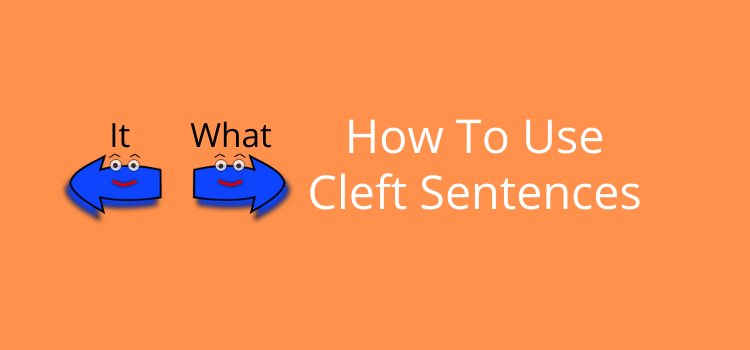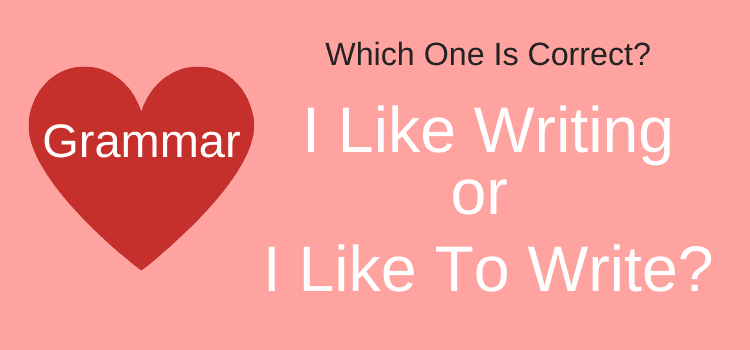
Cleft sentences consist of a two-clause construction and often start with the introductory subjects of what or it.
The word cleft is an adjective that means to split or divide something into two parts. In grammar, we use this division to add more emphasis to the first clause in a sentence.
There are a lot of cleft constructions.
The most common are it-clefts and wh-clefts. But there are many more you can use to add variety to your writing.
How to construct cleft sentences
You are probably using some of these in your writing.
Yet it is worth understanding how to correctly add more emphasis to certain sentences when the need arises.
The purpose of a cleft sentence is to place emphasis on a particular part of a sentence.
You can also use it to provide emphasis on a specific point.
As its cleft name implies, there are always two parts (clauses) to a sentence.
This makes it a more complex sentence.
The two basic constructions of cleft sentences use it or what and the verb to be.
It + Be + That Clause
What Clause + Be + Clause
Let’s look at some examples of how to use cleft sentences.
Simple cleft sentence examples
Here are two simple declarative sentences.
I’ll use it and what clefts.
They show how each form works when you change to using two clauses.
A familiar face on the book cover attracted my attention.
It-cleft: It was a familiar face on the book cover that attracted my attention.
Wh-cleft: What attracted my attention was a familiar face on the book cover.
In the first cleft, the emphasis is placed on a familiar face.
In the second, it is on the attraction.
I read the book, but the ending of the story was disappointing.
It-cleft: It was the ending of the story that was disappointing.
Wh-cleft: What disappointed me was the ending of the story.
In the first cleft, the emphasis is placed on the ending.
In the second, it is on the disappointment.
With these two forms, you can change any simple sentence and move the most important element to the first clause. It’s also a way to avoid using I, he, or she to start a sentence.
Moving the emphasis
You can take almost any sentence and use a cleft form to move the emphasis to the first clause of a sentence.
Here’s an example of how you can rewrite a sentence in four ways.
Jane went to Rome with her mother last summer.
Emphasis on the subject.
It was Jane who went to Rome with her mother last summer.
Emphasis on the direct object.
It was with her mother that Jane went to Rome last summer.
Emphasis on the adverb of time.
It was last summer that Jane went to Rome with her mother.
Emphasis on the indirect object.
It was to Rome that Jane went with her mother last summer.
Pseudo cleft sentences
Pseudo clefts use the wh-cleft form but don’t have a full second clause.
They are commonly used with verbs such as need, want, like, or dislike.
What you need is a holiday.
What I want is a break from work.
What I like is his smile.
What I dislike is working on the weekend.
You can also add more emphasis by using the auxiliary do/did/doing.
What people do is their business.
What Peter did was unforgivable.
What they are doing to the riverfront is awful.
Other forms of clefts
English is rich in different cleft structures.
We use them from time to time but may not recognize or know the name of the grammatical form.
Here’s a quick list of some of the more common cleft forms, complete with example sentences.
Where, when, why and how-clefts
In place of what, you can also create clefts with other wh-words and how.
However, when you use why, how, or whom, there is a possibility that the sentence might sound a little awkward.
She enjoys going to the cinema the most.
Where she enjoys going to the most is the cinema.
She likes to go to the cinema on Fridays.
When she likes to go to the cinema is on Fridays.
She has an annual pass for the cinema.
Why she goes to the cinema is because she has an annual pass.
She paid for her pass with her credit card.
How she paid for her pass was with her credit card.
The only wh-word that you can’t use is whose.
All-cleft
When you use this form, the word all makes the first clause far more important.
He wanted to buy a vintage car.
All he wanted to do was buy a vintage car.
Mona complains about everything.
All Mona does is complain.
Inferential cleft
An inferential cleft can help clarify something when it might be wrongly assumed.
The structure is usually two consecutive it-that sentences.
The first is negative, but then the second clause makes the clarification.
It’s not that I’m mean with money. It’s that I choose to spend it wisely.
You can also add just to the clarifying clause.
It’s not as if he doesn’t want to get married. It’s just that he would like to save a bit more money first.
Reversed wh-cleft
In this cleft form, it reverses the standard form and moves the what clause to the second clause in a sentence.
He wanted to buy a new Macbook Air.
A new Macbook Air is what he wanted to buy.
He wanted to find a new job.
A new job is what he wanted to find.
There-cleft
When you use this form, it takes the empty subject word, there to start the first clause.
It most commonly emphasizes the object of a simple sentence.
Mary wants to buy a new car.
There‘s a new car that Mary wants to buy.
I want to watch the new James Bond movie.
There‘s a new James Bond movie that I want to watch.
If-because cleft
In this form, you can create a reason for an action.
He wants to leave home to be independent.
If he wants to leave home, it’s because he wants to be independent.
Jane uses social media to become famous.
If Jane uses social media, it’s because she wants to become famous.
Summary
Similar to other grammar forms, such as inversion, using cleft sentences in your writing can help you add a little more variety.
But you should use them in moderation and only when it’s necessary to create stronger emphasis.
A simple declarative sentence is almost always easier to read than a complex cleft sentence.
However, when you want to add extra weight to one particular part of a sentence, you have the grammar tools to do it.
Related reading: Wish In The Past Tense For Present And Future Wants
Share This Article



Hi,
I was just wondering if
“What I dislike is working on the weekend” is equivalent to “What I dislike is work on the weekend”
Also if
“All he wanted to do was buy a vintage car.” is equivalent to “What I dislike is working on the weekend”
Thanks.
Yes, your examples are all clefts.
But, “what I dislike is work on the weekend” is different.
Work is a noun in this sentence. But it still forms a type of cleft.
Some of my Japanese students here in Japan often write “It is because..” sentences, but they don’t sound natural to me. I’ve stressed not starting a sentence with “Because” since they only write a clause after it and not a dependent and independent clause. Someone has taught them to get around that by writing “It is because…” Often it seems the reason will naturally be forthcoming without using “because” at all, but they’re partly translating from Japanese which uses the equivalent of “because” a lot. How do you feel about “It is because…” in academic writing? Thank you!
It’s often difficult to break habits like this, Julie. All you can do is encourage your students to avoid clefts. But if they start a sentence with because get them to try following it with the subject. For example, It is because a giraffe is tall that… Change to; Because a giraffe is tall, it… Then the sentence will be more natural.
is this correct?
what they do is (to ) dump the waste
or
what they do is dumping the waste
Your first example is correct, but without (to).
I had no idea this sentence construction had a name. Good to know, and will start working it into my writing. Thank you.
Nice to be able to put a label on this type of sentence construction.
Interesting. I’ve not heard of cleft sentences before. I knew the form, but not that it has a name.